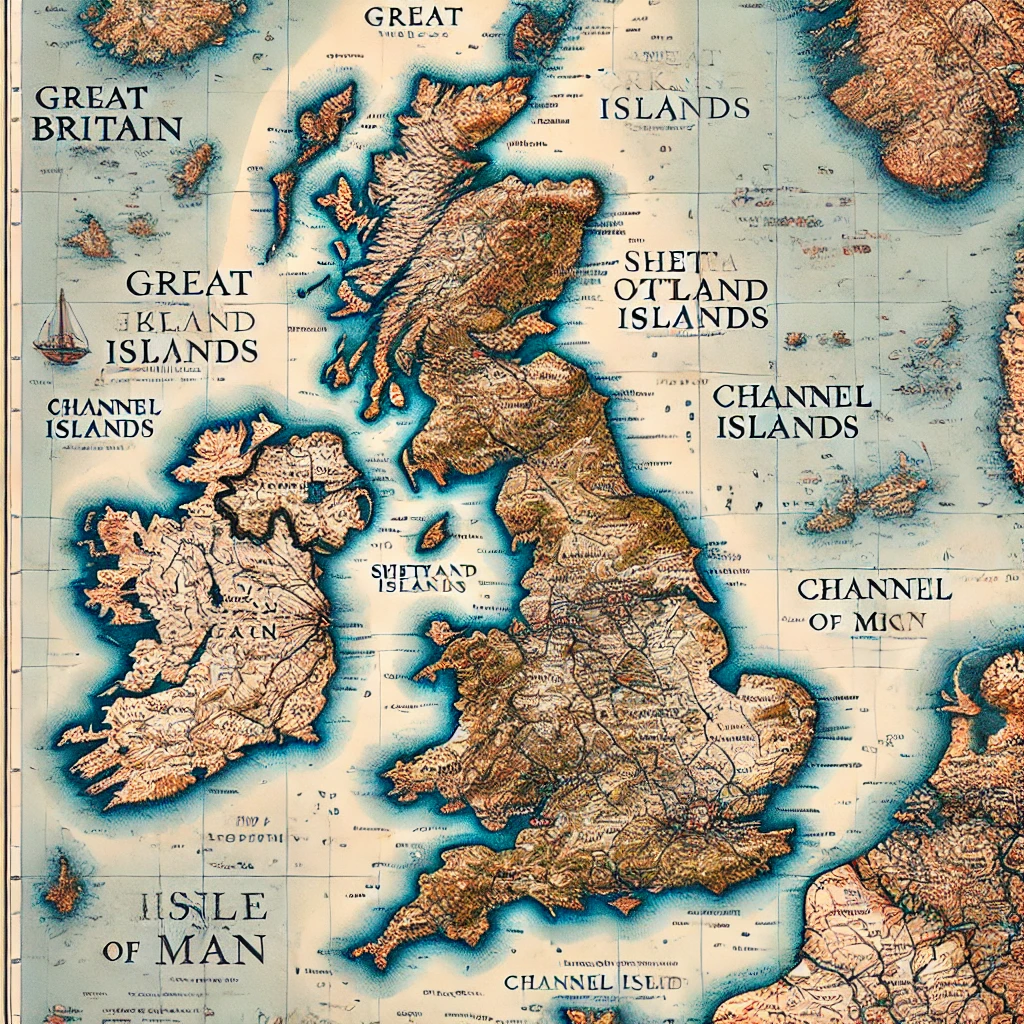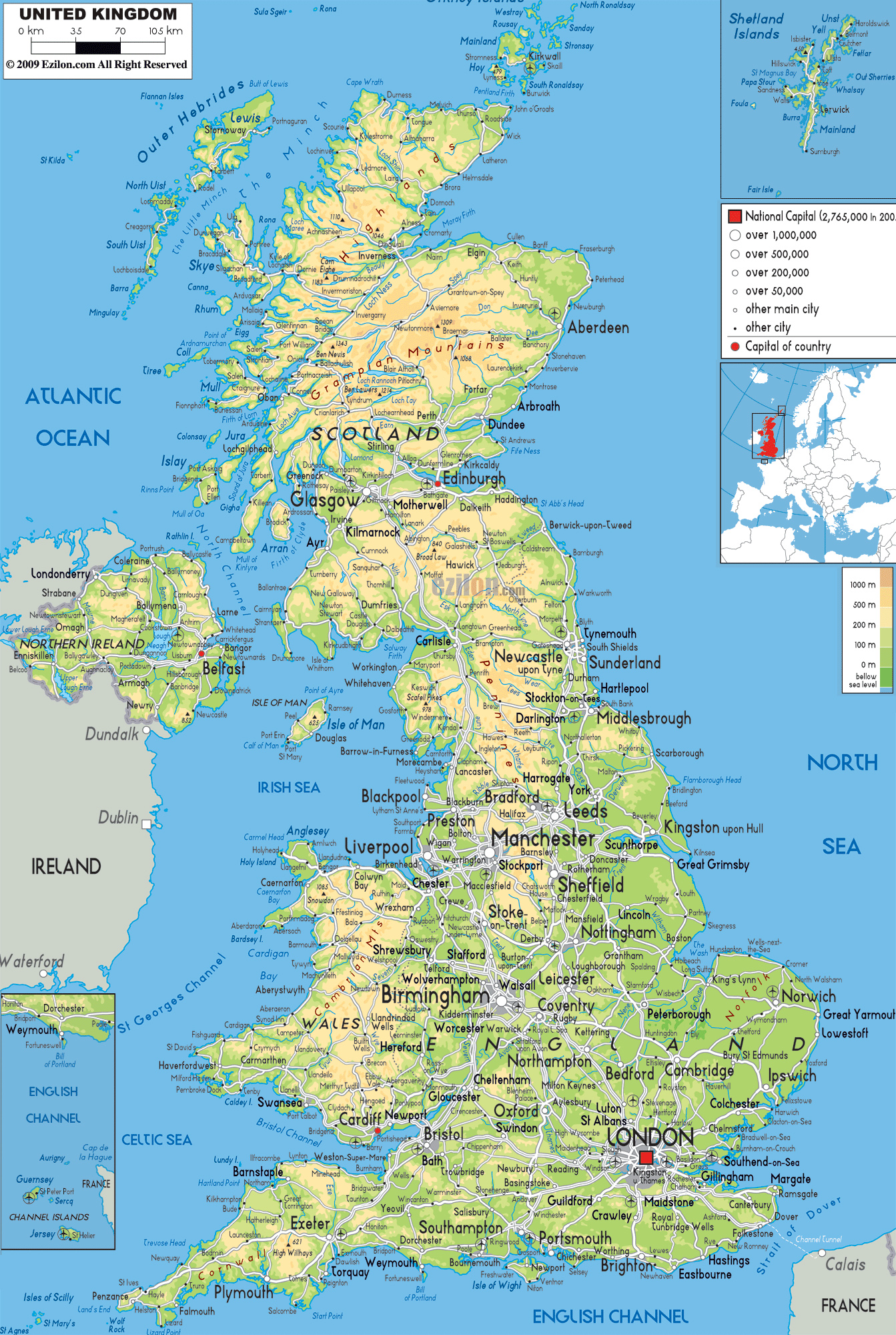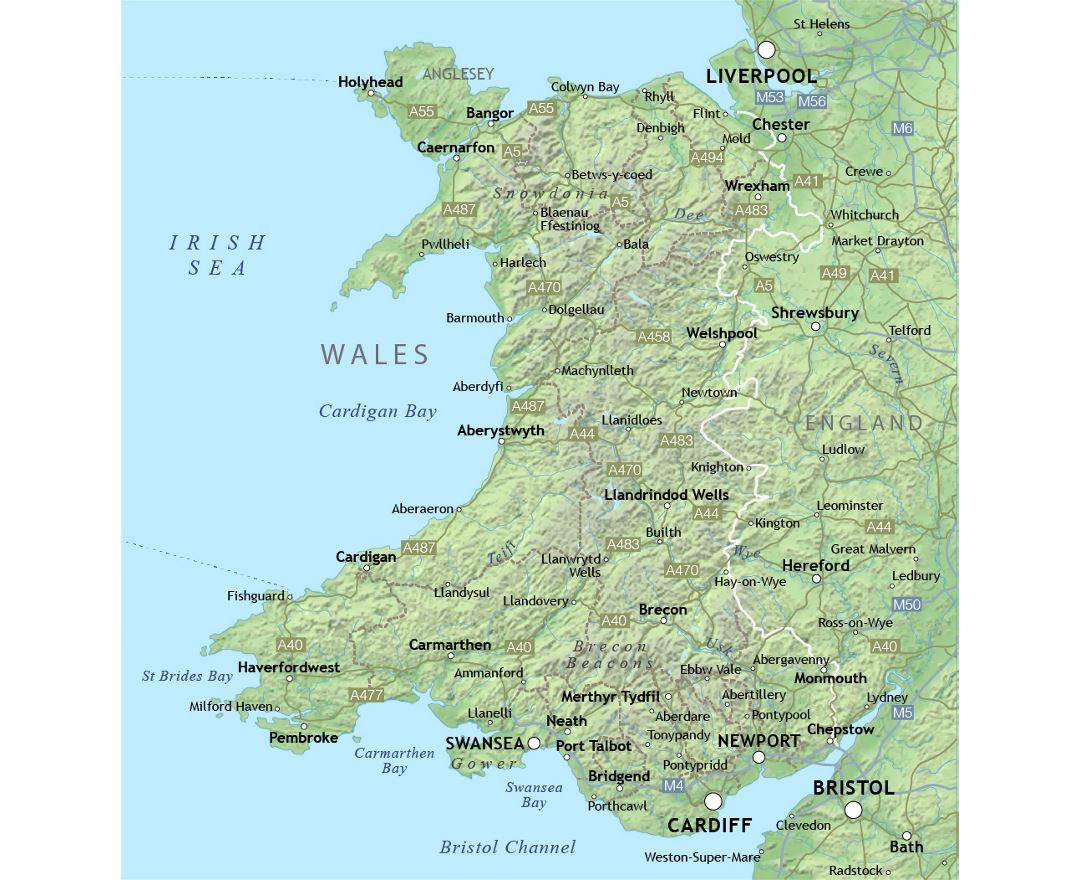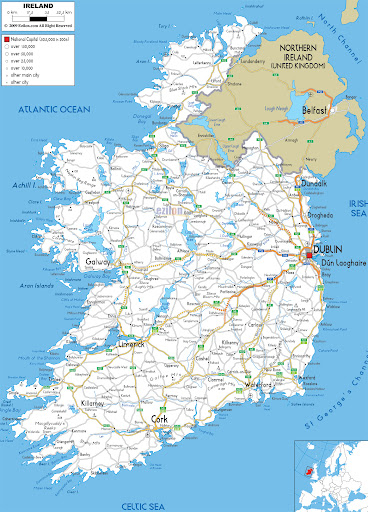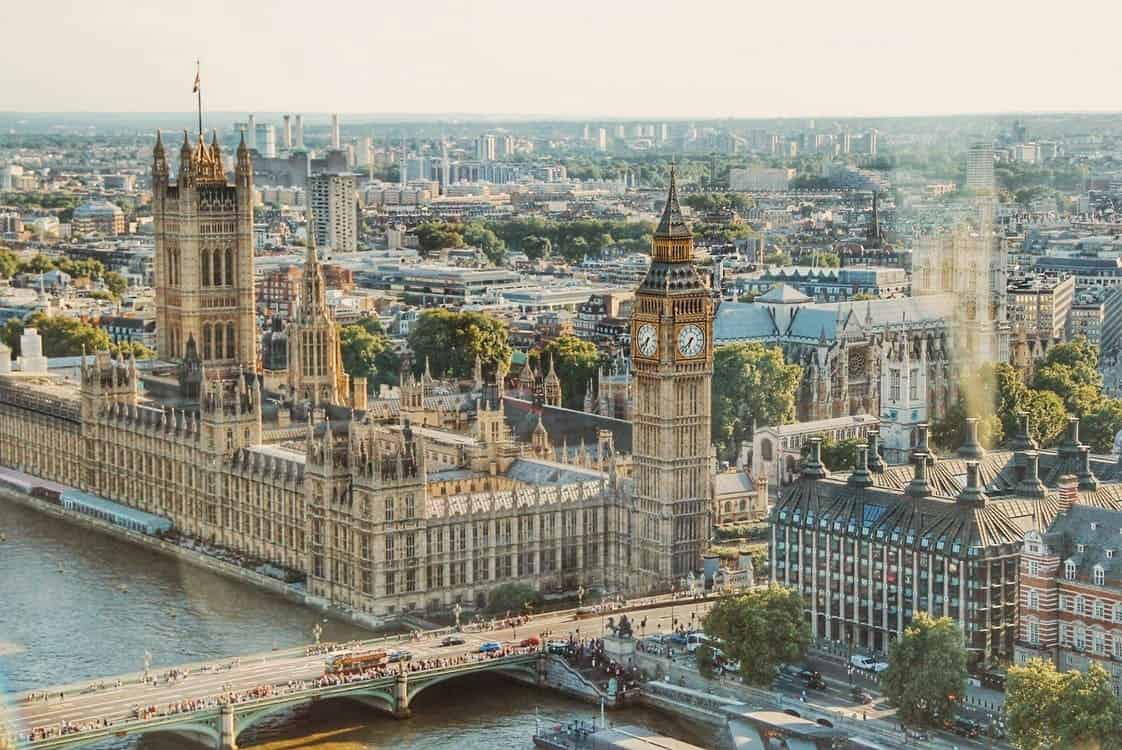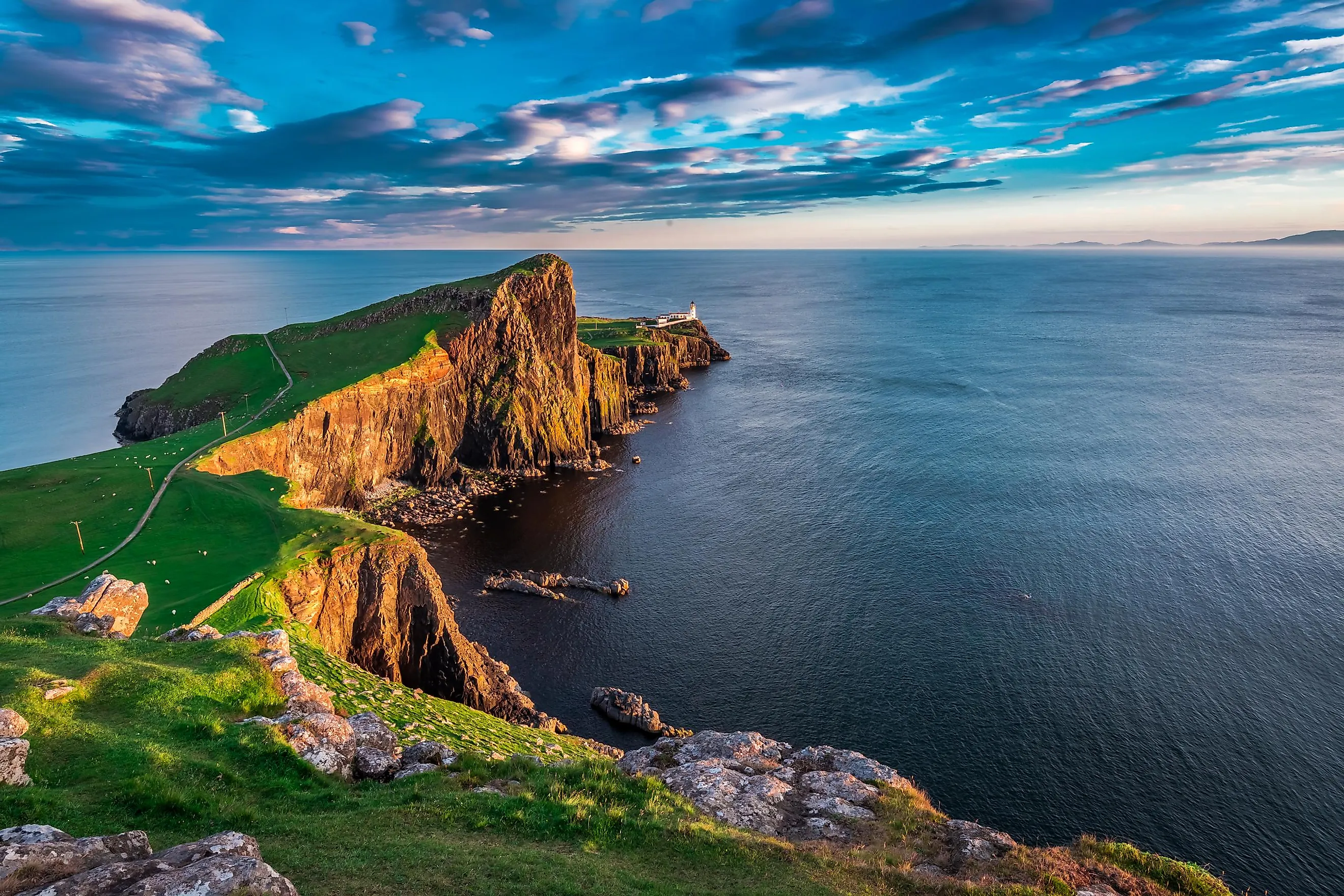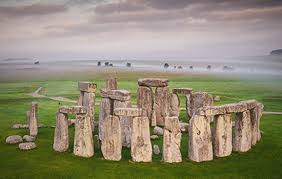British Isles - Maps, Countries And Fascinating Facts
British Isles. A comprehensive guide with maps, country overviews, and fascinating historical facts.
Author:Maya ReyesReviewer:Finn WildeMar 27, 2025387 Shares64.4K Views

One of Europe's interesting geographical and cultural areas is the British Isles. This islands which lies off the northwest coast of mainland Europe, is well-known for its unique multicultural , beautiful surroundings, and extensive history.
The islands have developed over thousands of years into a fusion of contemporary cities, historic customs, and breathtaking natural features that still captivate tourists from around the globe.
The British Isles provide an unmatched travelexperience, if it is the literary legacy of England and Ireland, the majestic castles of Scotland, or the majestic cliffs of Moher. This article will walk you through the region's geography, history, cultural highlights, and useful travel advice.
What Are The British Isles?
The British Isles are a group of islands in the North Atlantic Ocean, including the two largest landmasses: Great Britain and Ireland, along with over 6,000 smaller islands. Great Britain consists of England, Scotland, and Wales, while Ireland is divided between Northern Ireland, part of the UK, and the Republic of Ireland, an independent nation.
Other notable islands, such as the Isle of Man, the Channel Islands, and the Hebrides, each add their own unique history and charm to the region. For those seeking island vacation spots, this diverse collection of islands offers an unparalleled variety of experiences. Surrounded by the Atlantic Ocean, North Sea, Celtic Sea, and English Channel, the British Isles boast diverse landscapes and rich cultural traditions.
Politically, they encompass the UK, the Republic of Ireland, and Crown Dependencies like the Isle of Man. This archipelago offers a unique blend of natural beauty and historical significance, making it an enduringly fascinating region.
British Isles Map
To understand the British Isles, it's essential to start with its geographical layout. The British Isles include two large islands: Great Britain and Ireland. Great Britain consists of England, Scotland, and Wales, while Ireland is divided into Northern Ireland (part of the UK) and the Republic of Ireland (an independent country). In addition to these two major islands, the British Isles also comprise hundreds of smaller islands, including the Isle of Man and the Channel Islands.
This map helps to visualize the British Isles, providing a clear look at its layout. Notable features include the English Channel separating the UK from France, the Irish Sea separating Great Britain from Ireland, and the North Sea to the east, which connects to Europe.
Map Of Great Britain
Great Britain is the largest island in the British Isles and includes the countries of England, Scotland, and Wales. It is separated from Ireland by the Irish Sea and from mainland Europe by the English Channel. The map of Great Britain highlights the major cities and regions that make it such a popular destination for travelers.
Key cities on the map include:
- London- The capital city of England and the UK, known for its iconic landmarks like the Tower of London, Buckingham Palace, and the Houses of Parliament.
- Edinburgh- The capital of Scotland, famous for its medieval Old Town and the Edinburgh Castle.
- Cardiff- The capital of Wales, known for its historical sites, including Cardiff Castle and the National Museum.
- Manchester, Birmingham, and Glasgow- Major cultural and industrial hubs in the UK, offering a mix of history, modern attractions, and sports.
The geographical layout of Great Britain influences the climate, culture, and the lifestyle of its inhabitants. The southern regions are generally warmer and more populated, while the northern and western areas are known for their scenic landscapes, including mountains and rugged coastlines.
Map Of Wales
Wales is located to the west of England and is known for its mountainous terrain, historic castles, and scenic coastlines. The Irish Sea borders Wales to the north and west.The map of Wales showcases its compact yet varied geography, featuring bustling cities and natural wonders.
Key cities on the map include:
- Cardiff- The capital city, recognized for Cardiff Castle, the Millennium Stadium, and its cultural attractions.
- Swansea- A coastal city known for its maritime history and nearby Gower Peninsula.
- Newport- A historic city with landmarks like the Newport Transporter Bridge and Tredegar House.
- Bangor- One of the smallest cities in the UK, located near Snowdonia National Park.
Wales' natural configuration, which includes rocky mountains, charming valleys, and a long coastline, makes it a popular destination for both history buffs and nature enthusiasts.
Map Of Ireland
Ireland is an island located to the west of Great Britain, known for its lush green landscapes, rolling hills, and vibrant cultural heritage. It is separated into two entities: the Republic of Ireland, an independent nation, and Northern Ireland, which is part of the United Kingdom. The Irish Sea lies between Ireland and Great Britain.The map of Irelandhighlights the major cities and attractions that make it a unique destination.
Key cities on the map include:
- Dublin- The capital of the Republic of Ireland, renowned for its rich history, lively music scene, and landmarks like Trinity College and the Guinness Storehouse.
- Belfast- The capital of Northern Ireland, famous for the Titanic Belfast museum and its Victorian architecture.
- Cork- Known as Ireland's "Rebel City," offering vibrant markets and scenic waterfront views.
- Galway- A cultural hub on the west coast, celebrated for its traditional Irish music and proximity to the Aran Islands.
Ireland’s geographical layout is marked by coastal cliffs, fertile plains, and winding rivers, contributing to its mild climate and agricultural significance.
History Of The British Isles
The history of the British Isles is a complex and fascinating narrative that spans millennia, shaped by waves of migration, conquest, and cultural exchange.
Prehistoric Beginnings
Human activity in the British Isles dates back to the Paleolithic era. Early inhabitants left behind remarkable structures, such as Stonehenge, a prehistoric monument whose exact purpose remains a mystery. Evidence of sophisticated Neolithic communities can also be seen at sites like Skara Brae in Scotland.
Roman Britain (43-410 AD)
The Roman Empire brought monumental changes to the region after invading in 43 AD. They established a network of roads, introduced advanced architectural techniques, and built fortified towns like Londinium (modern-day London). The Hadrian’s Wall in northern England stands as a testament to their engineering prowess and their efforts to defend their empire from northern tribes.
Medieval Transformations
From the Viking invasions in the ninth and tenth centuries until the Norman Conquest of England in 1066, this era was marked by tremendous change. With their introduction of famous buildings like Durham Cathedral and Windsor Castle, as well as their alteration of the political landscape, the Normans left an enduring impression.
The Industrial Revolution And Modern Era
By the 18th century, the British Isles became a global center of industrial and cultural innovation. The Industrial Revolutiontransformed cities like Manchester and Birmingham into industrial hubs, while London emerged as a world leader in commerce and governance.
In the modern era, the islands have maintained their status as cultural and economic powerhouses, attracting millions of visitors each year.
Geography Of The British Isles
The geography of the British Isles is as varied as its history, ranging from jagged coastlines and serene lakes to towering mountains and lush meadows.
Great Britain
- England: Known for its rolling green countryside, iconic white cliffs, and historic rivers like the Thames. The Lake District in the north is a haven for hikers and poets alike.
- Scotland: Famed for its rugged Highlands, dotted with lochs and misty glens. The Cairngorms National Park and Loch Ness are just two of the country’s natural highlights.
- Wales: A land of towering peaks, including Mount Snowdon, and a coastline that boasts over 870 miles of walking paths.
Ireland
Ireland is renowned for its striking contrasts, from the flat, expansive midlands to the dramatic coastal cliffs. The Ring of Kerry and Wild Atlantic Way are among its most celebrated scenic routes.
Smaller Islands
The British Isles’ smaller islands contribute significantly to the archipelago’s diversity:
- The Isle of Skye: Known for its rugged beauty and iconic geological formations like the Quiraing and Old Man of Storr.
- The Isles of Scilly: Situated off the southwestern tip of England, these islands are celebrated for their subtropical flora and fauna.
Cultural Highlights Of The British Isles
The British Isles are a treasure trove of cultural riches, reflecting centuries of artistic, linguistic, and culinary traditions.
Languages
English is the predominant language, but regional tongues like Welsh, Scots Gaelic, and Irish are also spoken. These languages are integral to the islands’ identities and are often celebrated in music, literature, and festivals.
Festivals And Traditions
- St. Patrick’s Dayin Ireland is a global celebration of Irish culture and heritage.
- Burns Nightin Scotland honors the works of poet Robert Burns with haggis and poetry readings.
- The Eisteddfodin Wales is a celebration of literature, music, and performance in the Welsh language.
Cuisine
From hearty dishes like Irish stew and Welsh rarebit to indulgent treats like scones with clotted cream, the food of the British Isles reflects its agricultural traditions and seafaring history.
The British Isles Today (Politics And Economy)
The political structure of the British Isles is complex, with several distinct nations and territories. The United Kingdom (UK) consists of four countries: England, Scotland, Wales, and Northern Ireland. The Republic of Ireland is an independent nation.
The economy of the British Isles is diverse and influential, with industries ranging from finance and technology to tourism and manufacturing. Key cities like London, Edinburgh, and Dublin are financial hubs, while the countryside is known for its agriculture and natural beauty.
Important aspects of the British Isles' economy include:
- Finance: London is one of the world’s leading financial centers, housing the London Stock Exchange and major banks.
- Tourism: The British Isles attract millions of tourists annually, thanks to their rich history, vibrant culture, and scenic landscapes.
- Technology and Industry: The region is home to innovative technology companies, as well as key manufacturing sectors, such as automotive production and aerospace engineering.
Islands Of The British Isles
1. Great Britain
Great Britain is the largest island in the British Isles and includes the countries of England, Scotland, and Wales. It is home to some of the world's most famous cities, including London, Edinburgh, and Cardiff, and boasts a rich history, from ancient monuments to iconic castles.
The island features diverse landscapes, including rolling hills, mountainous regions like the Scottish Highlands, and scenic coastlines. For travelers seeking best island destinations, Great Britain offers a captivating blend of cultural landmarks and natural beauty that caters to every kind of explorer.
2. Ireland
Ireland, located to the west of Great Britain, is known for its lush green landscapes, rolling hills, and vibrant culture. The island is divided into two entities: Northern Ireland, which is part of the United Kingdom, and the Republic of Ireland. Notable attractions include Dublin's historic sites, the Cliffs of Moher, and the Ring of Kerry. For a better understanding of its geography and layout, an Ireland mapcan provide valuable insight into the locations of these breathtaking destinations.
3. The Hebrides
The Hebrides, an archipelago off the west coast of Scotland, is divided into the Inner and Outer Hebrides. These islands are renowned for their rugged landscapes, scenic beauty, and cultural heritage. Key islands in the Hebrides include the Isle of Skye, Lewis and Harris, and Islay.
4. The Channel Islands
The Channel Islands, located in the English Channel, are a group of islands that are British Crown dependencies but not part of the United Kingdom. The main islands include Jersey, Guernsey, Sark, and Alderney. These islands offer beautiful beaches, medieval castles, and a mild climate.
5. Isle Of Skye
The Isle of Skye, off the northwest coast of Scotland, is renowned for its rugged terrain, dramatic cliffs, and scenic beauty. Key attractions include the Old Man of Storr, the Quiraing, and the Fairy Pools. The island is also famous for its castles, such as Dunvegan Castle, and rich Gaelic heritage.
6. Orkney Islands
Located to the northeast of Scotland, the Orkney Islands are an archipelago that offers a blend of prehistoric sites, wildlife, and coastal scenery. Notable sites include the Ring of Brodgar, Skara Brae, and the Orkney Islands' Viking history, which is reflected in many of the island’s landmarks and museums.
7. Shetland Islands
The Shetland Islands, located north of the Orkney Islands, are known for their spectacular cliffs, seabirds, and distinctive Viking culture. The islands are a haven for wildlife enthusiasts and are also famous for the Up Helly Aa Viking fire festival, held annually in Lerwick.
8. North Uist
North Uist, located in the Outer Hebrides, is known for its unspoiled landscapes, including peat bogs, lochs, and sandy beaches. It is a perfect destination for birdwatching, particularly at the Balranald Nature Reserve, which is home to many rare species.
9. South Uist
South Uist, also part of the Outer Hebrides, is renowned for its diverse natural landscapes, including mountains, lochs, and peat bogs. It is a popular destination for hiking and exploring Gaelic culture, with ancient ruins scattered across the island.
10. Isle Of Bute
Located in the Firth of Clyde, the Isle of Bute is known for its Victorian architecture and scenic coastal paths. Popular sites include Mount Stuart, a stately home, and the island’s botanical gardens.
11. Isle Of Man
The Isle of Man, located in the Irish Sea, has its own distinct cultural identity, with a history dating back to the Celts and Vikings. The island is known for the annual TT motorcycle races, as well as its natural beauty, including hills, beaches, and cliffs.
12. Isle Of Wight
Off the southern coast of England, the Isle of Wight is famous for its charming seaside towns, historical sites like Osborne House, and natural landmarks such as the Needles. It offers activities ranging from hiking and cycling to beachcombing.
13. Lundy Island
As a marine nature reserve in the Bristol Channel, Lundy Island is well-known for its rich ecosystem. With its historic lighthouse and ancient remains, the island is an excellent site to dive, observe birds, and take in the remote environment.
14. Holy Island (Lindisfarne)
Holy Island, or Lindisfarne, is located off the northeast coast of England. Famous for its medieval priory, the island is a significant site for Christian history in Britain. Visitors can experience its unique wildlife, historic ruins, and breathtaking coastal views.
15. St. Kilda
St. Kilda, part of a UNESCO World Heritage Site, is located in the Outer Hebrides. The island is known for its remoteness and stunning beauty, with cliffs that rise steeply from the Atlantic Ocean. St. Kilda was once home to a small community, but now the island is a haven for seabirds and a popular destination for nature enthusiasts.
16. Isles Of Scilly
The Isles of Scilly, located off the southwestern tip of Cornwall, are a group of small islands known for their subtropical climate, stunning beaches, and crystal-clear waters. The islands have a peaceful atmosphere, ideal for hiking, boating, and birdwatching.
17. Bardsey Island
Bardsey Island, off the coast of North Wales, is a small, remote island with rich wildlife and a history dating back to early Christian times. The island has become a popular pilgrimage site due to its association with St. Cadfan and its tranquil beauty.
18. Isle Of Arran
Located in the Firth of Clyde, the Isle of Arran is often referred to as “Scotland in Miniature” due to its diverse landscapes, which include mountains, beaches, and forests. Arran offers a range of activities such as hiking, cycling, and visiting historic sites like Brodick Castle.
19. Skokholm Island
Skokholm Island, which is a part of Wales' Pembrokeshire collection of islands, is renowned for both its natural beauty and its birds, especially puffins. Visitors can take in the island's beautiful countryside and undisturbed peace as a designated nature reserve.
20. Guernsey
Guernsey is one of the Channel Islands, known for its mild climate, beautiful beaches, and historical significance. Key sites include Castle Cornet, a historic fortress, and the island’s unique mixture of British and French culture.
21. Jersey
Jersey, the largest of the Channel Islands, offers a mix of British and French influences in its culture, food, and architecture. The island features stunning coastal cliffs, sandy beaches, and historic sites such as Mont Orgueil Castle and the Jersey War Tunnels.
22. Sark
Sark, part of the Channel Islands, is renowned for being a car-free island with stunning views, peaceful lanes, and a rich history. The island is popular for outdoor activities, including cycling and walking, and offers picturesque landscapes.
23. Alderney
Alderney, one of the Channel Islands, is known for its rugged beauty, wildflowers, and historical landmarks. The island has a mild climate, making it a popular destination for outdoor enthusiasts, and is home to several ancient fortifications and coastal paths.
24. Puffin Island
Puffin Island, located off the coast of North Wales, is a small island famous for its large puffin colony. The island is a birdwatching hotspot and offers views of the surrounding sea and nearby Anglesey.
25. Foula
Foula, located in the Shetland Islands, is one of the most remote inhabited islands in the UK. The island is known for its dramatic cliffs, which rise steeply from the sea, and its rich birdlife, particularly puffins and other seabirds.
26. Benbecula
Benbecula is one of the islands in the Outer Hebrides, Scotland. The island is known for its natural beauty, including beaches, lochs, and mountains. Benbecula is also home to a rich Gaelic culture and offers outdoor activities like fishing and hiking.
27. Colonsay
Colonsay, located in the Inner Hebrides, is known for its peaceful atmosphere, stunning beaches, and historic sites. Visitors to Colonsay can enjoy walks through its nature reserves and see the island’s rich history, including its ruined castles and ancient burial sites.
28. Rum
Rum, part of the Inner Hebrides, is a remote island known for its rugged terrain, diverse wildlife, and picturesque beauty. It is a haven for hikers, wildlife watchers, and those seeking a remote escape from urban life.
29. Eigg
Eigg, part of the Small Isles in the Inner Hebrides, is famous for its dramatic scenery and eco-friendly community. The island offers stunning walks, including to the iconic An Sgurr, a volcanic plug, and is home to a rich variety of wildlife.
30. Tresco
Tresco is one of the Isles of Scilly and is known for its subtropical gardens, pristine beaches, and relaxed atmosphere. The island features the Tresco Abbey Gardens, a botanical haven with plants from around the world.
Map Of Scotland
Scotland occupies the northern part of Great Britain and is celebrated for its stunning landscapes, rich history, and distinct culture. It is surrounded by the North Sea to the east and the Atlantic Ocean to the west.The map of Scotland highlights its diverse regions, from the urban centers to the remote islands and Highlands.
Key cities on the map include:
- Edinburgh- The capital city, known for its historic and cultural landmarks, including Edinburgh Castle and the Royal Mile.
- Glasgow- A vibrant city famous for its architecture, art, and lively music scene.
- Aberdeen- Nicknamed the "Granite City," renowned for its maritime history and beautiful coastline.
- Inverness- A gateway to the Scottish Highlands and famous for its proximity to Loch Ness.
Scotland’s geographical features include dramatic mountain ranges, deep lochs, and hundreds of islands, such as the Hebrides, Orkney, and Shetland.
British Isles Flag
1. Union Jack (Flag Of The United Kingdom)
The Union Jack, also known as the Union Flag, is the national flag of the United Kingdom. It symbolizes the union of three nations:
- England:Represented by the red cross of St. George on a white background.
- Scotland:Represented by the white saltire (diagonal cross) of St. Andrew on a blue background.
- Ireland:Represented by the red saltire of St. Patrick.
Design and History: The Union Jack combines the elements of these three flags into a single design. Wales is not represented in the Union Jack because it was already united with England when the flag was created. The flag has been a symbol of British unity and sovereignty since 1801.
Usage: The Union Jack is widely recognized and flown on government buildings, military uniforms, and during national events across the UK.
2. Flag Of England
The flag of England features a simple but bold design: a red cross on a white background. Known as the Cross of St. George, it represents England’s patron saint, St. George.
Historical Context: Adopted during the Middle Ages, the flag became associated with English royalty and the Crusades. It later evolved into the symbol of England itself.
Modern Usage: The flag is prominently displayed at sports events, especially during football matches and national celebrations like St. George’s Day.
3. Flag Of Scotland
Scotland’s flag, also called the Saltireor the Cross of St. Andrew, consists of a white diagonal cross on a blue background. It is one of the oldest flags in Europe, dating back to the 9th century.
Legend: The flag's origin is linked to a legendary battle in 832 AD when a white cross appeared in the sky, inspiring Scottish forces to victory.
Symbolism and Usage: The Saltire is a powerful emblem of Scottish identity and is flown alongside the Union Jack on official buildings. It also takes center stage during national events like St. Andrew’s Day.
4. Flag Of Wales
The flag of Wales features a red dragonon a green and white background. Known as Y Ddraig Goch, it is one of the most visually striking flags in the world.
Origins: The red dragon is rooted in Welsh mythology, symbolizing strength and resilience. The green and white colors were introduced by the Tudor dynasty, which had Welsh origins.
Modern Significance: The flag is a proud symbol of Welsh heritage and is flown during sports events, cultural festivals, and on St. David’s Day, Wales’ national day.
5. Flag Of Ireland (Republic Of Ireland)
The tricolor flag of the Republic of Ireland consists of three vertical stripes:
- Green:Symbolizing Irish Catholics and nationalists.
- Orange:Representing Irish Protestants and unionists.
- White:Signifying peace and unity between the two communities.
Historical Background: Adopted in 1922 following Ireland’s independence from the United Kingdom, the flag reflects the country’s aspiration for harmony.
Usage: It is flown during national celebrations, sporting events, and as a symbol of Irish identity worldwide, particularly on St. Patrick’s Day.
6. Northern Ireland
Northern Ireland does not currently have an official flag of its own. Instead, the Union Jack is used as the flag of the United Kingdom.
Historical Flag: The Ulster Banner(a red cross on a white field with a red hand and a crown) was used from 1953 to 1972, but it is no longer officially recognized.
Modern Context: The lack of an official flag reflects Northern Ireland’s complex political and cultural history. Today, symbols like the Union Jack or the Irish tricolor are used depending on the community.
Crown Dependencies And Other Regions
Isle Of Man
The Isle of Man has its own flag featuring the Triskelion(three armored legs arranged in a circular pattern), symbolizing strength and resilience.
Channel Islands
The Channel Islands, including Jersey and Guernsey, each have unique flags that represent their distinct identities within the British Crown Dependencies.
Best Time To Visit The British Isles
Spring (March To May)
Spring brings blooming flowers, lush green landscapes, and pleasant temperatures ranging from 8°C to 15°C (46°F to 59°F). It’s an excellent time to visit gardens, such as the Royal Botanic Garden in Edinburgh or Kew Gardens in London, and enjoy outdoor attractions with fewer crowds.
Summer (June To August)
Summer is the peak season, with temperatures ranging from 15°C to 25°C (59°F to 77°F). Festivals like the Edinburgh Fringe and the Glastonbury Festival make this a lively time to visit. Coastal areas, such as Cornwall and the Isle of Skye, are perfect for scenic hikes and water activities. However, popular destinations can get crowded, so early bookings are recommended.
Autumn (September To November)
Autumn offers cooler weather (10°C to 18°C or 50°F to 64°F) and stunning foliage, especially in countryside areas like the Lake District and the Scottish Highlands. It’s a quieter period, ideal for those seeking serene landscapes, cozy pubs, and fewer tourists.
Winter (December To February)
Winter transforms the British Isles into a magical wonderland, with festive markets, twinkling lights, and the possibility of snow in some regions. While temperatures can dip to 0°C to 7°C (32°F to 45°F), destinations like Edinburgh during Hogmanay or London at Christmas are enchanting. Rural areas may be less accessible, but cities thrive with winter charm.
Special Considerations
- Wildlife Spotting:Visit in spring or autumn for the best chances to see puffins, seals, and other native wildlife.
- Budget Travel:Winter and early spring offer lower prices on accommodations and attractions, making them perfect for budget-conscious travelers.
The Best Places To Visit In The British Isles
1. Edinburgh Castle
Edinburgh Castle stands as one of Scotland’s most iconic landmarks, perched high on Castle Rock and dominating the skyline of the capital city. This historic fortress has played a central role in Scottish history, serving as a royal residence, military stronghold, and symbol of national pride.
2. The Tower Of London
A cornerstone of England’s history, the Tower of London is a UNESCO World Heritage Site and one of the country’s most famous landmarks. Built by William the Conqueror in 1066, it has served as a royal palace, prison, and treasury. Today, it is home to the Crown Jewels, a dazzling collection of regalia used in British coronations.
4. The Giant’s Causeway
The Giant’s Causeway in Northern Ireland is a natural wonder that has inspired myths and legends for centuries. This UNESCO World Heritage Site features around 40,000 interlocking basalt columns, created by volcanic activity over 60 million years ago. The formations resemble a giant staircase leading into the sea, giving rise to the legend of the Irish giant Finn McCool.
4. Stonehenge
Stonehenge is a very old and famous place made of big rocks. It's in England and people have been wondering about it for a long time. Some think it was a special place for ceremonies or to track the sun and stars. You can visit Stonehenge and learn about it with an audio guide or see things from the past at the visitor center. It's really cool to see the sun rise or set there.
5. The Isle Of Skye
The Isle of Skye, part of Scotland’s Inner Hebrides, is celebrated for its natural beauty and dramatic landscapes. Known as the “Misty Isle,” it boasts natural wonders like the Old Man of Storr, the Quiraing landslip, and the Fairy Pools crystal-clear waterfalls great for photographers and adventurers.
Beyond its breathtaking beauty, Skye is rich in history, with medieval castles and old ruins that recount the tales of its Celtic and Viking past. A taste of traditional Scottish culture and a warm welcome may be found in the island's charming communities, such Portree.
Expert Tips For Planning Your Trip
1. Research Seasonal Weather And Events
The weather in the British Isles can be unpredictable. Pack layers and waterproof clothing, regardless of the season. Check local events like festivals, parades, and cultural celebrations that could enhance your visit or impact accommodation availability.
2. Choose Your Destinations Wisely
The British Isles comprise a diverse range of landscapes, cities, and historical sites. Focus on a few key regions to avoid feeling rushed. For example:
- City Lovers:London, Edinburgh, and Dublin offer vibrant urban experiences.
- Nature Enthusiasts:The Scottish Highlands, the Lake District, and Ireland’s Cliffs of Moher are must-sees.
- History Buffs:Stonehenge, the Tower of London, and Belfast’s Titanic Quarter provide fascinating insights into the past.
3. Plan Transportation In Advance
Efficient public transport options like trains, buses, and ferries connect most destinations. Book rail passes or ferry tickets early for savings. If visiting rural areas, consider renting a car to enjoy flexibility and access to off-the-beaten-path locations.
4. Accommodations For Every Budget
From luxury hotels and quaint B&Bs to budget-friendly hostels, the British Isles offer a wide range of accommodations. Booking ahead is essential, especially during peak seasons. For a unique experience, try staying in a castle or countryside inn.
5. Currency And Payment Tips
The British Isles use multiple currencies:
- Pound Sterling (£):England, Scotland, Wales.
- Euro (€):Ireland. Carry some cash, but credit and debit cards are widely accepted. Inform your bank about your travel plans to avoid issues with card transactions.
6. Pack Smart For Versatility
- Include sturdy walking shoes for exploring cobblestone streets and hiking trails.
- Layer your clothing for variable weather.
- A universal power adapter is essential, as plugs vary across regions.
7. Embrace Local Customs And Etiquette
Learn a few phrases in Irish Gaelic or Scottish Gaelic if visiting these areas, it’s a thoughtful gesture. Respect local traditions, and remember to tip modestly (10-15%) in restaurants and for taxi services.
8. Food And Drink Experiences
Indulge in local specialties like fish and chips in England, haggis in Scotland, or a traditional Irish stew in Ireland. Pair your meals with regional beverages like Scotch whisky or Guinness beer for an authentic taste of the Isles.
9. Travel Insurance Is A Must
Ensure you have comprehensive travel insurance covering medical emergencies, cancellations, and lost belongings. This is particularly important given the varied terrains and activities in the British Isles.
10. Prioritize Time For Relaxation
It’s easy to overpack your itinerary, but leave time for spontaneous adventures and unwinding in charming pubs, serene gardens, or scenic coastal villages.
Interesting Facts About Britsh Isles
1. Not A Single Country
The British Isles consist of two sovereign nations; the United Kingdom (UK) and the Republic of Ireland, along with several smaller islands and territories.
2. The United Kingdom Explained
The UK itself includes four countries: England, Scotland, Wales, and Northern Ireland. Each has its own distinct culture, legal system, and traditions.
3. Largest Island
Great Britain is the largest island in the British Isles and the ninth-largest in the world.
4. Second-Largest Island
Ireland, the second-largest island, is divided between Northern Ireland (part of the UK) and the Republic of Ireland.
5. Thousands Of Islands
While most people know about the main islands, the British Isles include over 6,000 smaller islands, such as the Isle of Man, Orkney Islands, and Channel Islands.
6. The Isle Of Man
The Isle of Man, located in the Irish Sea, is a self-governing Crown Dependency with its own parliament, the Tynwald, which is one of the oldest continuous parliaments in the world.
7. Home To Gaelic Languages
Languages like Scottish Gaelic and Irish Gaelic are still spoken in parts of Scotland and Ireland, showcasing the region’s Celtic heritage.
8. The Irish Sea
The Irish Sea separates Great Britain from Ireland and is an important waterway for trade and transportation.
9. Iconic Cliffs
The White Cliffs of Dover in England are a world-famous natural landmark, visible from France on clear days.
10. Oldest City
Colchester, in England, is considered the oldest recorded town in the British Isles, dating back to Roman times.
11. Ancient Universities
The British Isles are home to some of the world’s oldest universities, such as Oxford University (founded in 1096) and Cambridge University (founded in 1209).
12. The Stone Circles
Stonehenge in England and Callanish Stones in Scotland are ancient stone circles with mysterious origins, dating back thousands of years.
13. Guinness And Tea
Ireland is famous for Guinness beer, while the British are known for their love of tea, consuming over 100 million cups daily in the UK.
14. Stunning Coastlines
The British Isles boast over 19,000 miles of coastline, with rugged cliffs, sandy beaches, and charming fishing villages.
15. Castles Everywhere
With over 4,000 castles, the British Isles have one of the highest densities of castles in the world. Some, like Edinburgh Castle and Windsor Castle, are still in use.
16. Shakespeare’s Land
William Shakespeare, one of the most famous playwrights in history, was born and worked in England. His works continue to influence literature globally.
17. Diverse Wildlife
The Isles are home to unique wildlife, including puffins, red deer, and seals, as well as iconic plants like the Scottish thistle and the English rose.
18. Royal Residences
The British Isles are dotted with royal palaces and estates, such as Buckingham Palace in London and Balmoral Castle in Scotland.
19. A Celtic Legacy
The Celtic culture has left a lasting impact, with traditions like Irish dance, Scottish bagpipes, and festivals such as Samhain celebrated to this day.
20. Weather Variety
The weather in the British Isles is famously unpredictable, with the possibility of sunshine, rain, and clouds all in the same day.
FAQs
What Countries Make Up The British Isles?
The British Isles include England, Scotland, Wales, Northern Ireland, and the Republic of Ireland, along with numerous smaller islands.
What Are The 6 British Isles?
The British Isles are an archipelago in the North Atlantic Ocean off the north-western coast of continental Europe, consisting of the islands of Great Britain, Ireland, the Isle of Man, the Inner and Outer Hebrides, the Northern Isles (Orkney and Shetland), and over six thousand smaller islands.
What Is The British Isles Called Now?
The United Kingdom of Great Britain and Northern Ireland (to give its full name) refers to the political union between England, Wales, Scotland and Northern Ireland. The UK is a sovereign state, but the nations that make it up are also countries in their own right.
What Languages Are Spoken In The British Isles?
English is the primary language, with regional languages like Welsh, Scots Gaelic, and Irish also spoken.
What Is The Difference Between UK And British Isles?
The British Isles is the largest of the three geographical territories. It commonly refers to the UK, its Crown Dependencies (the Channel Islands and the Isle of Man), as well as the country of Ireland.
Final Thoughts
Every corner of the British Isles, from busy cities to peaceful countryside, has a story worth finding out. If you're drawn to the British Isles by its vibrant traditions or its ancient landmarks, you can be sure that your trip will leave you with unforgettable memories.
Jump to
What Are The British Isles?
British Isles Map
History Of The British Isles
Geography Of The British Isles
Cultural Highlights Of The British Isles
The British Isles Today (Politics And Economy)
Islands Of The British Isles
Map Of Scotland
British Isles Flag
Best Time To Visit The British Isles
The Best Places To Visit In The British Isles
Expert Tips For Planning Your Trip
Interesting Facts About Britsh Isles
FAQs
Final Thoughts

Maya Reyes
Author
Maya Reyes’s wanderlust was sparked in the temples of Luang Prabang, where the scent of lemongrass and the chants of monks revealed the transformative power of travel.
Since then, her journey has been defined by cultural immersion and authentic connections. From learning batik in Indonesia to sharing meals with nomadic families in Mongolia, Maya seeks experiences that highlight the human stories behind each destination.
Travel for her is a way to weave her narrative into the world’s cultural tapestry, creating bridges across diverse ways of life. Maya has traveled to 15 countries and shares her insights through writing and storytelling.

Finn Wilde
Reviewer
For Finn Wilde, the wilderness is more than just a destination - it’s a way of life. Over the past decade, he has led multiple expeditions in some of the world’s most remote regions, from the icy fjords of Greenland to the rugged trails of Patagonia.
Finn emphasizes sustainability in all of his adventures, helping participants connect with nature while promoting responsible exploration. His expeditions inspire individuals to explore the great outdoors while fostering a deep respect for the environment.
Latest Articles
Popular Articles
